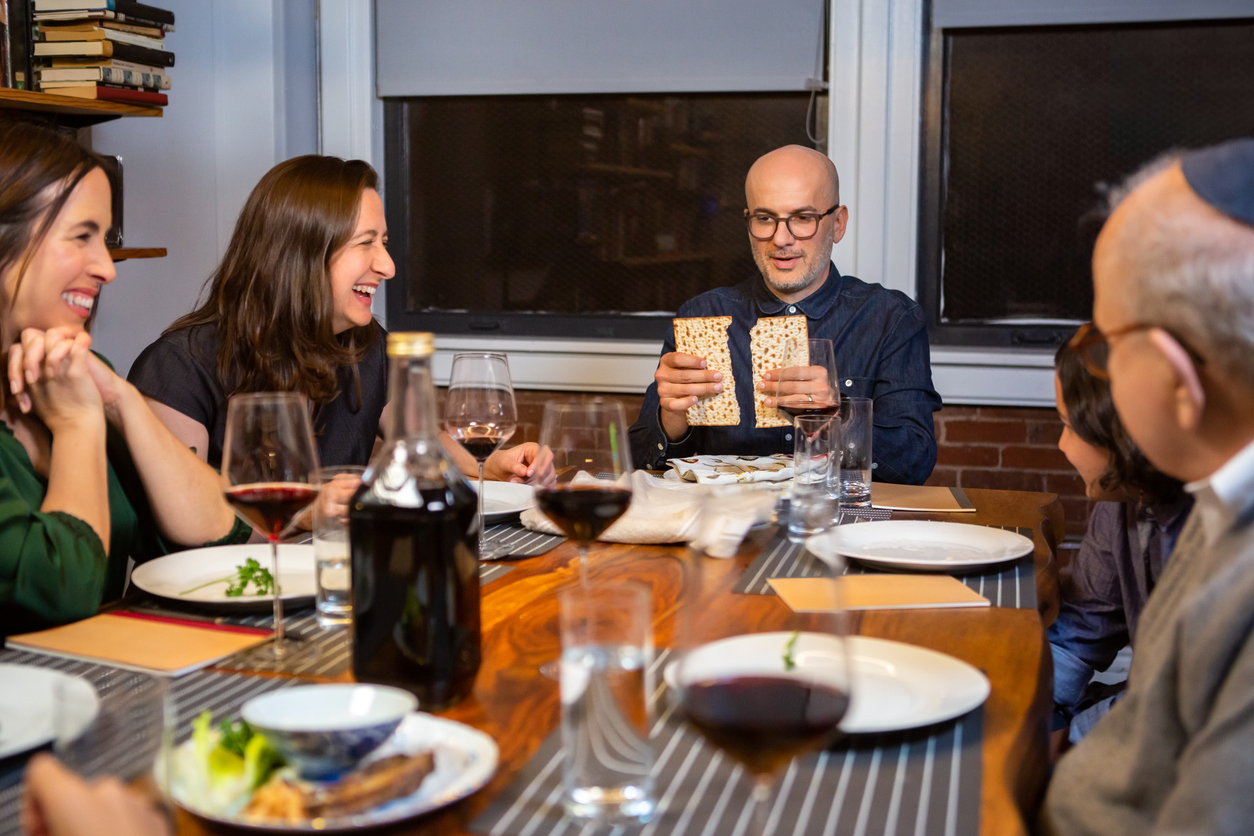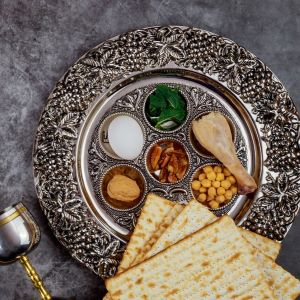From Fasting to Feasting: The Spiritual Rhythms of Yom Kippur and Passover
Words of Wisdom with Rabbi Efrat Zarren-Zohar
This Dvar Torah about Passover was written by Dr. Bella Tendler Krieger, CAJE’s Director of Adult Learning: The Center for Jewish Ideas and Engagement.

As we move through the Jewish year, few holidays reveal as much about the Jewish soul as Yom Kippur and Passover.
One calls us inward, into silence and fasting. The other calls us outward — into storytelling, song, and shared meals.
Though they stand in stark contrast, both holidays use food — or its deliberate absence — as a spiritual tool, helping us sharpen our focus and deepen our connection to Jewish memory and meaning.
Two Sacred Spaces: Synagogue and Home
Yom Kippur unfolds within the walls of the synagogue. It's a day of communal prayer, collective repentance, and soul-searching, spent among fellow worshipers wrapped in white, standing side by side before God.
Passover, by contrast, is rooted in the home.
It centers around the seder table, where families gather to recount the Exodus from Egypt, transforming the familiar rituals of eating and drinking into a dynamic act of remembrance and education.
Community and Family, Adults and Children
Yom Kippur speaks largely to the adult soul — its solemn liturgy and meditative tone geared toward those mature enough to grapple with themes of sin, forgiveness, and mortality.
Passover, meanwhile, is built for learners of every age.
The seder is a pedagogical masterpiece, designed to spark curiosity, encourage questioning, and invite each person — especially children — to see themselves as if they personally left Egypt.
It’s an intergenerational celebration, where storytelling becomes a sacred act.
Fasting and Feasting: Two Paths to the Heart
On Yom Kippur, we refrain from food to elevate the spirit. Hunger becomes a form of purification, sharpening our introspection.
On Passover, we feast to remember.
The seder plate overflows with symbolic foods, each one a tactile reminder of our journey from slavery to freedom. In both cases, food is more than sustenance — it becomes a gateway to the sacred.

The Seder Plate: A Story Told in Taste
The seder isn’t just dinner — it’s a reenactment, a sensory experience that bridges past and present.
Each item on the plate carries layers of meaning:
- Matzah: The bread of affliction, and also the bread of freedom. It reminds us of slavery and the urgency of redemption.
- Salt water: Evokes both the tears of bondage and the waters of the Red Sea that split before us.
- Charoset: Sweet and rich, it recalls the mortar of our labor but tastes of hope.
- Wine: A symbol of joy, yet diminished drop by drop as we name the plagues—reminders of pain and divine justice.
Rabban Gamliel taught that three core symbols must be discussed at the seder:
- Peisach: The paschal lamb, representing God’s protection and the chosen-ness of the Israelites.
- Matzah: A symbol of sudden salvation, and a call to never abandon hope.
- Marror: Bitter herbs that anchor us in the reality of suffering.
Together, these elements teach timeless values:
Gratitude (Peisach), Grit (Marror), and Hope (Matzah).
They reflect the story of a people who are chosen, challenged, and always striving toward redemption.
Korech: Holding the Paradox Together
The “Hillel sandwich” — Korech — wraps these ideas into a single bite.
Originally made with meat from the Peisach sacrifice, matzah, and marror, and now with matzah, marror, and charoset, it fuses sweetness and bitterness into one unified experience.
It reminds us that freedom isn’t free from struggle.
We carry the joy of chosen-ness alongside the burden of antisemitism.
We cannot expect one without encountering the other.
But holding it all together is the matzah — plain, quick, and full of promise.
It is our resilience, our adaptability, and our unwavering hope that moves us forward.
Every question asked, every symbol explained, and every bite taken is a step on the path from Egypt to freedom.




